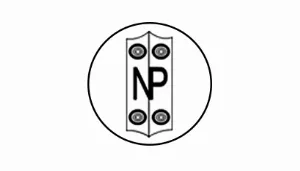Four state services organisations— the Confederation of All Nagaland State Services Employees’ Association (CANSSEA), Federation of Nagaland State Engineering Service Associations (FONSESA), Nagaland Secretariat Service Association (NSSA) and Nagaland Finance & Accounts Service Association (NF&ASA)— have appealed to the state government to induct non-state civil services (SCS) officers into the Indian Administrative Service (IAS) and also called for modification to the Nagaland Public Service Commission Regulation, 2008 as amended on December 13, 2021.
In a joint representation to chief secretary, Dr Ilang, K Hutoi Sema, Vechiso Chakhesang and Chubasangla Longkumer, presidents of CANSSEA, FONSESA, NF&ASA and NSSA respectively, appealed to the state government to protect the rights and interest of non-SCS officers and commence recruitment as per the IAS (Recruitment) Rules, 1954.
They also called for selection of non-SCS officers to the IAS under (Appointment by Selection) Regulations, 1997 and the IAS (Appointment by Induction) Regulations, 2013 which was kept for non-state civil servants as envisaged in the recruitment rules.
Acknowledging the state government for its commitment to other services by allowing three officers from other services to enter into the IAS as per IAS (Recruitment) Rules, 1954, they pointed out that the induction into IAS cadre through promotion and selection for both SCS and other services were governed by the same Rules of 1954.
However, they noted that as per rule 4, sub-rule (2) of rule 8 and sub rule 91) of rule 9 of the above rules specified that recruitment could not exceed 33.33 % or one-third of senior posts under the state government, and which mandated persons to be recruited from non-SCS officers not exceeding 15% exclusively from other services.
They said the Indian Administrative Service (Fixation of Cadre Strength) Regulations, 1955, Amendment Regulations, 1997 notified by the Ministry of Public Grievances & Pensions, Department of Personnel and Training published in the Gazette of India had raised the cadre strength to 64, the 12th Amendment 2010, extraordinary vide G.S.R. 898(E) 2010 raised the cadre strength from 70 to 91 and further raised to 94 in the fourth Amendment regulations 2015, vide G S.R. 1021(E) Dated New Delhi 30) December 2015.
Though the IAS from other services was to be two in 1997 and four in 2010, they claimed that contrary to the provisions laid down in the regulations, only three IAS, instead of four were in position as of today, denying the right to multiple efficient, outstanding and deserving non-SCS officers.
NPSC: In another memorandum to the chief secretary, the four associations pointed out that Part-II of the regulation pertaining to the composition and condition of service of the commission denied other services of the state to be a member in the apex state public service commission (NPSC).
They claimed that Article 318 of the Indian constitution did not specifically made any condition, mentioned or laid down any norm/condition that the commission’s members should be determined from all India services or state civil services only. It had only given the state provisions and regulations for appointment of its members, they added.
They said other states exercised inclusiveness to their state services when it came to nomination of members to their respective state public service commissions.
However, they alleged that the regulation made by the state government showed biasness and the intention to sideline the immense contributions made by other state services. They claimed that some of officers in other state services had outstanding performance and achievements, and had immensely contributed to the state.
They urged the chief secretary to intervene in the matter and modify the rules at the earliest to avoid further confrontation with other state services associations.

